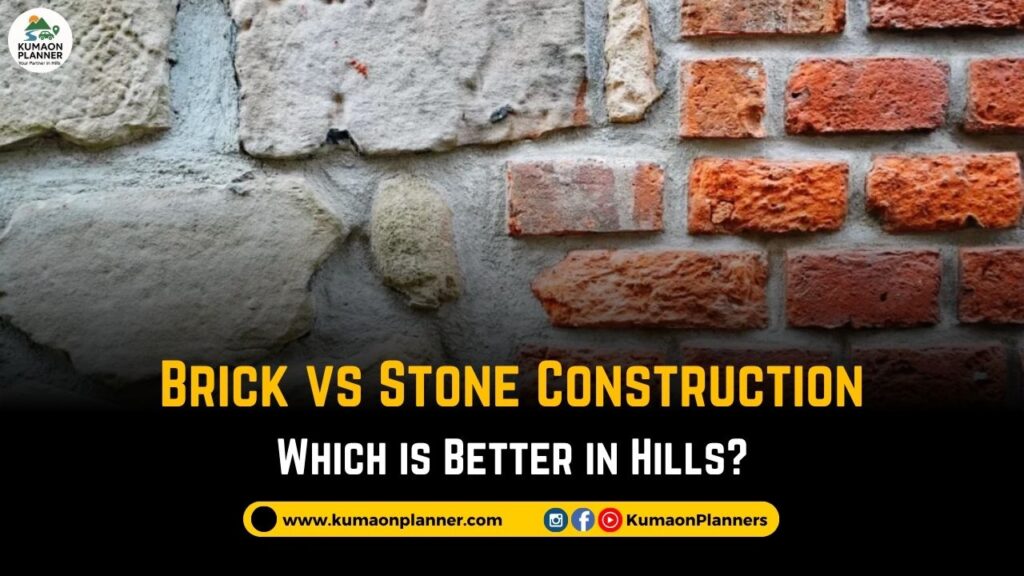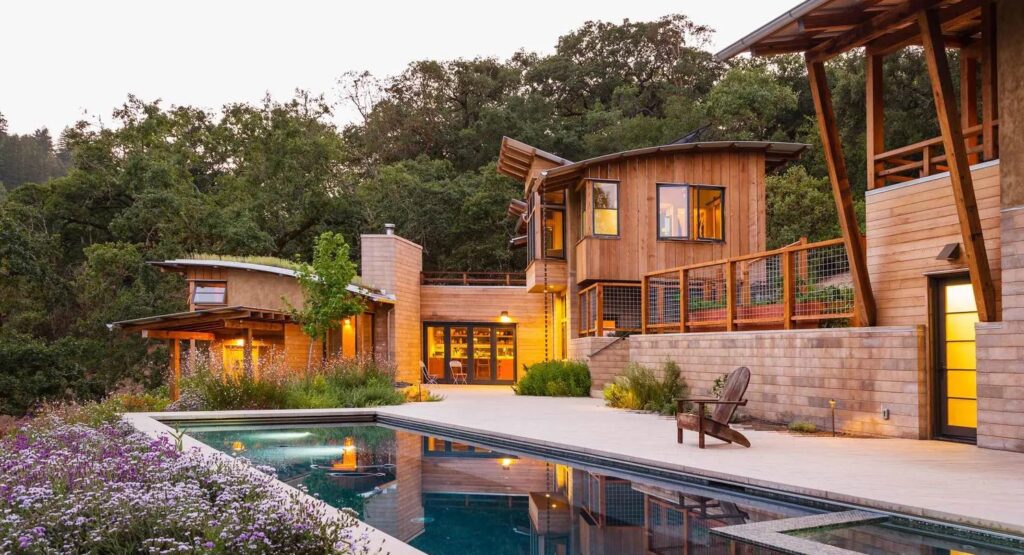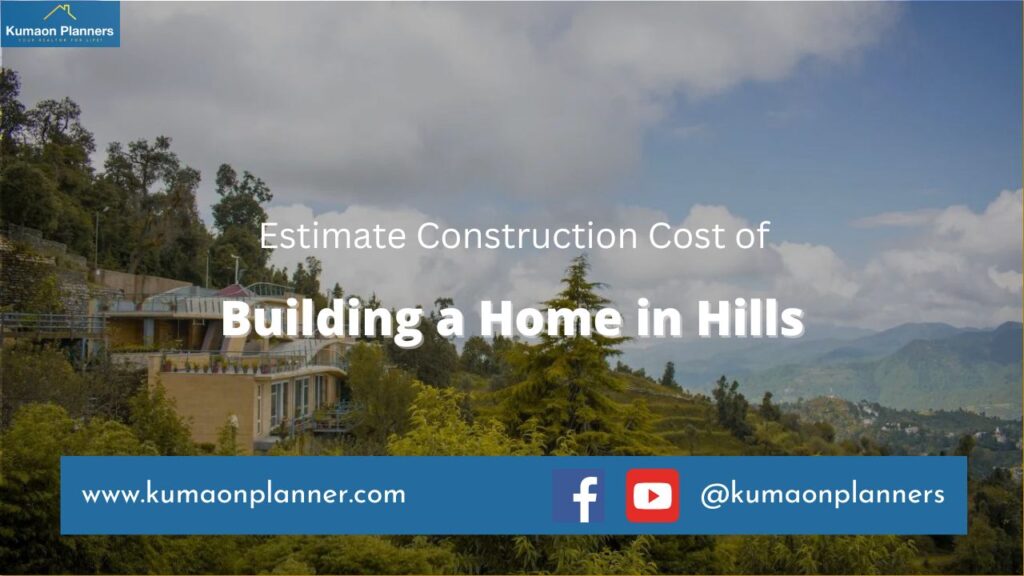Building a house in the hills of Uttarakhand? One of the biggest decisions you’ll face is:
“Should I go with brick walls and cement slab, or traditional stone masonry?”
Both are common in Uttarakhand. But choosing the right method depends on your land, budget, weather, and long-term use.

Let’s break it down in simple terms — based on local knowledge and real experience.
🧱 Option 1: Brick + Cement Construction (with RCC Slab)
This is the most common method today in towns and roadside areas of Kumaon. It uses:
- 🧱 Brick walls built with cement mortar
- 🧱 RCC slab (reinforced cement concrete) for the roof
- 🧱 Sometimes RCC beams/columns for support
✅ Advantages:
- Works well for 2–3 storey buildings
- Easier for plumbing, wiring, fittings
- Materials easily available in towns
- Suitable for modern layout designs
❌ Disadvantages:
- Less insulated (hot in summer, cold in winter)
- Needs good supervision to avoid weak structures
- Costlier due to cement, steel, and transportation
- Not ideal for remote or soft hill slopes
🪨 Option 2: Stone Masonry Construction
This is the traditional hill construction method still used in villages and many scenic areas. It uses:
- 🪨 Locally sourced stone
- 🪨 Mud or cement mortar
- 🪨 RCC bands sometimes added for earthquake safety
✅ Advantages:
- Thermally better – warm in winter, cool in summer
- Strong & durable if done right
- Natural look that blends with the hill landscape
- Stones are cheap or even free in some locations
- Eco-friendly and rooted in heritage
❌ Disadvantages:
- Needs skilled local masons
- Slower construction time
- Modifications (plumbing/electricity) are tougher
- Poor work = long-term structural issues
⚖️ Brick vs Stone – Hill Construction Comparison
| Feature | Brick + Cement (with RCC) | Stone Masonry |
|---|---|---|
| Strength | High (if RCC framed) | High (if banded) |
| Earthquake Safety | Moderate–High | High with proper bands |
| Thermal Insulation | Low | High |
| Cost | Medium–High | Medium |
| Speed | Fast | Slow |
| Look & Feel | Modern/plain | Traditional/natural |
| Maintenance | Moderate | Low if built well |
💬 Which Is Better for Hill Homes?
It depends on your location, budget, and purpose.
Choose Brick + Cement (RCC slab) if:
- Your land is roadside or urban fringe
- You plan 2 floors or more
- You want modern design flexibility
- You have regular access to cement, bricks, contractors
Choose Stone Masonry if:
- Your land is remote, sloped, or surrounded by nature
- You want a cozy home, not a rental or hotel
- You value eco-living or local aesthetics
- You have access to skilled masons
💡 Best of Both?
Many people now use a hybrid model: RCC frame + stone infill walls.
This gives both strength and insulation — and keeps the hill feel intact.
🧱 Real Talk from Hills
We’ve seen homes collapse not because of the material — but because of poor planning and supervision.
⚠️ Brick walls with weak beams? Unsafe.
⚠️ Stone houses without lintels or bands? Risky in quakes.
⚠️ Cheap cement mixes? Cracks within a year.
✅ The safest and strongest homes are those where locals + engineers work together, with the right technique for the terrain.
🛠️ Need Help with Hill Construction?
At KumaonPlanner, we offer:
- ✅ Construction supervision (local, honest, experienced)
- ✅ Help in choosing right contractors or masons
- ✅ Guidance on material planning, cost-saving & approvals
📞 Let’s build your home safely and beautifully – the hill way.
🔗 Visit: Construction Supervision Service in Hills
🧭 Conclusion
Don’t just copy what someone else built — understand what suits your land, lifestyle, and climate.
Whether you choose brick or stone, the real strength comes from planning + local knowledge.
We’re here to help — Your Partner in the Hills. 🏡🌄
Quick Connect Here
For any other query, go to the Contact us page.




